I want to express my heartfelt appreciation for initiating this [leadership] training program.
0 Comments
A New Year has started and fresh inspirations are coming in. At Hive17 we focus on facilitating effective teams, and that is particularly important on the top (also check our recent CxO Team post). Just yesterday, the Embassy of Switzerland in Singapore shared a post about the Swiss Federal Presidency and the Swiss Federal Council. An example I like to share as it is a high-level model for a self-organising team.
CxO Teams are in similar situations; they have broad and deep responsibilities; they have the tendency to focus the majority of their time on their own department; they tend to work less as one team. The Swiss government puts a structure in place to counter these tendencies. A structure that any company can learn from and become more effective in delivering change. Here are some suggestions to look out for:
How do you build a more effective and self-organised CxO team? Source: Swiss Federal Presidency, LinkedIn Are you looking for ways to boost your productivity and control your costs? The Hive17 Human Operating System is designed to enable teams to give their best and one of the key elements is innovation.
At Hive17 we often observe that medium-sized organisations have limited resources and may be stuck in traditional ways of thinking. Hive17 can help you to overcome these barriers and build a culture for effective continuous improvement within your organisation. Here is how this might work. Let's say that you are looking to improve your efficiency in your operations. We would start with the right mindset and approach to identify creative ideas. This requires a deep understanding of the problem by involving the right people and enabling everyone to express and appreciate new ideas - as many as possible. After that, we would test these ideas using a scientific approach to stimulate trial & learning. We will help you to set up a clear hypothesis, collecting the right data, and analysing the results carefully with an open and curious mind. As a result, you can expect to see within a few months a 15% cost reduction and productivity gain. The new culture will also enable you drive quality and create a future-proof business that is able to thrive in any market. Every year, my Alma Mater brings about 70 students from St.Gallen to Singapore for an exchange semester - undoubtedly an unforgettable and important experience. As part of their program, they conduct a consulting project with their peers at SMU. Over the years, we observed one key ingredient for successful projects: effective collaboration within the teams.
This year I had the honour again to introduce how to form effective teams in a short period of time. I feel it is always so insightful and a great learning experience for me to work together with students. Absorbing their curiosity and insightful point of view. Here are the key steps we covered in the 90 minutes session. Start with a win-win attitude. When we are entering a meeting, negotiating or selling our products, how often do you observe that one party wants the opponent to lose out? We can only achieve maximum synergy if we consider the win of the other party and have the courage to stand for our win as well. Effective teamwork happens when we enable all team members to give their best. This requires clear, common goals, shared leadership, a desire to deliver high quality, quick decision-making, and a high level of energy. And let's not forget that the work environment strengthens the mutual trust. Shared values are the basis of team principles. These will provide guidance on how the team wants to work together and also establishes boundaries. The team principles also include ways how we get to know each other better and build social connections. Conflict will arise and effective teams are not good at avoiding conflict - they are good at conflict management. First step: deflate emotions. When we are super excited or very angry - in any case, we won't be able to think rationally and create solutions that resolve the conflict. What are your key ingredients for effective teams? We just finished a team retreat and during the closing, the client shared "this was amazing, we never got the people to share so much. The sessions were fun, insightful and engaging. Thank you so much!". How did we get there?
One of the thing we can observe with many companies, friends, clients, and teams we are working with: we are overwhelmed, we are stuck in a rat race. Looking at the "Second Quadrant Model", this means we are stuck in the first quadrant: our important and urgent tasks. We don't have the bandwidth to allocate time for the important and non-urgent tasks, which allow us to build an effective work-environment and reflect on our strategy and priorities. How can we facilitate this change? This is where team retreats come in. While an investment in time and money, they allow us to create the necessary brain space to build a solid foundation for team effectiveness. This is the exemplification of Slowdown to Speedup! So, how shall we go about team retreats? There are some principles for successful team retreats; here is my take: a) enable the participants to switch off from their daily grind; b) lots of time for quality, social interactions; c) the managers are participants on the same level as everyone else (an independent, external facilitator helps); d) focus the sessions on topics in the second quadrant. What did I miss here? Ok, great principles... What shall we discuss concretely? First of all, start with an overall theme for the retreat which provides the context for the conversations. Often we come across the broad opportunity around 'improving collaboration' and 'building ownership'. Though it can also have themes like 'shaping our desired culture', 'discovering new market opportunities', etc. As a next steps, it is important to provide a structure and path for constructive and effective discussion. Here is an approach:
Great - as a team, we had 2-3 days off from our daily work and enjoyed a fantastic time with our family at work. And then we come back to the office and we will be very quickly overwhelmed. We want that the great stuff we discussed during the retreat is continued back at work; we want that we keep the momentum. For that, it is vital that we immediately build routines that carve out space for our second quadrant tasks and actions. And for sure, the foundation for this should be defined at the retreat. How do you experience successful team retreats? We all heard that we need to celebrate success in order to motivate our people. And companies are getting creative: employee of the month, best idea of the month, people awards in endless categories; or they are sticking to the established tools like bonus and commission. And yes, celebrating is great and it gives all of us a short kick. The big question: what happens if we stop with these stimuli? Performance might very well dwindle away. That's the nature of "if-this-then-that" rewards, of extrinsic motivation.
How can we celebrate to strengthen lasting success? Great business outcomes are typically the result of hard work. Let's focus on that! This hard work is in my experience always the result of how well people work together; within teams, across teams and beyond organisational borders. Lasting success comes from high-performing teams which will be able to bring solid and sustainable change to your organisation. What are the typical barriers to high-performing teams? These can be summarised as dependency on the leader, lack of structure, risk aversion, and lack of safety & inclusion. This means, when we want to increase the collaborative performance in and across teams, then we need to look at building a solid structure and principles for the way of working. We need to find ways to manage risk by experimentation. We need to provide a work environment where we leverage diversity and people feel safe. And most importantly, all team members need to become leaders and contribute to the direction of the crew. So, let's celebrate the collaborative success! And this means we focus on the why and what - we celebrate permission and direction. The permission and ownership we are delegating in order to enable leaders across the board; the direction that we build together and provides us with a meaningful team glue. This will be the foundation to manage great change and transform your company forward. How are you strengthening your team to thrive in a volatile and chaotic environment? Last week I had the great opportunity to hold a lecture at SMU with the Asia Terms students of the University of St.Gallen. A group of 60 exchange students are joining 60 students from SMU and working together on consulting projects from a wide range of corporate partners. This is an excellent opportunity for the students to get exposed to the work environment and to collaborate with their peers in cross-cultural teams.
In my experience, a critical leadership skill to deliver successful projects is to facilitate great collaboration. A group of highly skilled people do not guarantee success; especially if they focus on their own benefits and are not supporting the overall team. When teamwork is smooth and 'oiled', then the team can be high-performing and deliver any change they are set out to. Where to start with collaborative success? There are four simple areas. First, my favourite, is creating win-win situations. Starting with considering the other party's situation and win before having the courage to share our own win. In a small team it is important to keep this balance right. It is a mindset to stay curious about the diverse thoughts and experiences each team member can bring to the team. With the students we had a great discussion about how they can leverage the diversity in their teams and stay open and courageous when working together with their corporate partners. The teams then worked on their team principles. What do we value in how we are working together? What are the killers for collaboration? The initial conversation in the team about their principles is so important to get to know each other and set some ground rules. When in conflict, the principles help to bring the conversation back on track. And for sure, the team principles are continuously improved and polished. Lastly, it is important to regularly reflect not only on what the team is delivering; it is equally important to review the way of working. What are the things we need to stop doing, doing more of, or start doing? This contributes to a better understanding within the team and hence it is better to create win-win situations. In this context, teams should also connect on a social level - leave work behind for a while and simply enjoy time together. Thanks to Stefan Morkoetter and his team for making this possible! More information about the HSG Asia Term in Singapore. For a few months I observed a certain notion; a change that is forming and starting to emerge. And last week, a friend of mine shared a story that greatly describes my notion. Here is the story.
My friend is regularly working in two different sites which are not far from each other and yet are very distinct. One day he met a colleague at the northern site, which has recently moved jobs from the southern site to here. My friend asked her, how is she experiencing her new job? She replied that she has only been here for 2-3 weeks and has observed one big difference: the people are much more open, the people are collaborating with a closer knit, and as a result, decisions are made much faster. When asked, what she thinks makes the difference, the answer was astonishingly simple. She expressed that she also observed that the lunch routine is different. At the southern site, most people organise their individual lunch from home or delivery, because there is no cantine that everyone can use. At the northern site, the company is providing a nice canteen and everyone is having their lunch there together. The managing director of the site is a regular visitor. As a result, the MD and everyone else is easier to approach and the people simply feel closer to each other. I love this story! A great example of how culture is defined and influenced. Hofstede has defined four elements: values, stories, routines and artefacts. And here we clearly have the latter two present: routines as in going to have lunch with your colleagues on a regular basis; and artefacts in form of the canteen itself, a place to gather as a community. I can feel that we are starting a period where people are longing for a community feel. Why is that? In my observation, over the last 2-3 decades many companies and manager have created the routine to talk about individual performance, paying out individual bonuses, developing talents in their individual careers, defining individual role descriptions, etc. All this has fostered a strong individual thinking. We went away from achieving results in teams, focusing on the success of the company, and caring for all people in our different communities. The recent pandemic then created a stronger awareness of this situation - hey, it is actually not so fun to do everything by ourselves; it makes us insecure. Let's come together again! In a community, we feel more protected, we have more fun, we can leverage more skills and experiences - we can be strong. How can we bring this community feel back into our organisations? Here some ideas:
How do you think we can bring the community feel back? We all make mistakes - they simply happen. One apparent place are our text messages - we make numerous typos, right? Although, these errors happen everywhere - big and small. And most of the time, our intention was doing the right thing. It is important to keep in mind that these errors are part of being human. Don't blame others. In this context, I often like to mention that errors depend on the perspective. Switching to a mindset to take mistakes as a learning opportunity is highly useful. Today, I want to talk about how we can minimise these errors that happen despite our good intentions. I want to share a tactic, a routine that will help you to reduce these mistakes from happening. David Marquet in his book Turn the Ship Around mentions this in several chapters: Deliberate Actions. This tactic is helping to break the flow between intention and action. So, we have the intention to send good morning wishes to our friend. We take our phone and type the message and often the word 'mooring' appears - a small error. Hit send, and your friend is puzzled. Deliberate Action suggests to install a small pause: before hitting send, read your message again. A successful tactic and routine I have created for myself to avoid misunderstandings and embarrassments. And this only takes a few seconds! This can also be implemented with our peers, friends and colleagues at work. Before you hit action, pause and re-state your intention. Here a verbal example: "Hey, let's send out this invite for Friday, 12 July" - "Oh, do you mean Tuesday, 12 July or Friday, 15 July?" - "Thanks! Yes, I mean Friday 15 July". These small actions help to make work more efficient, effective and improve collaboration in the team. On top of that, the practice of deliberate actions will help to cultivate transparency - a fantastic way to change your team's collaborative success! How do you intend to implement deliberate actions? Source: Turn the Ship Around, David Marquet At the end of last year, I have decided to follow my interest and take a deeper look at Climate Tech. I started this out of three simple beliefs: climate change is an essential global topic; creating business opportunities will accelerate the solutions; change management practitioners can enable to achieve impact.
Today, I am proud that the announcement went out that we have launched a SwissCham Climate Tech Subcommittee! Together with Regula Schegg, Marco Preisig and Jérémy Lovey, we have launched this community with the goals to
We are looking forward to organising a series of workshops and networking events. In small working groups we will collaborate on concrete projects. In larger groups we will network and share case studies. What makes you excited about Climate Tech? Official Announcement One observation I made over the past years is that there seems to be a growing gravitation towards focus on individual work. This not only establishes silo mentality and makes collaborating across departments, geographies and hierarchical levels more difficult. This also stimulates individualism within teams; a blame culture is nurtured and the spirit of working together fades away. Elements that are nudging in this direction are the way we set objectives and rewards, the mandate of individual job description, the setup of functional organisational structures, etc. They often reward individual contribution over team achievements.
At the same time, there are tons of information and concepts that praise and promote the fact that we can reach ultimate success only by collaborating with others: Google research, High Performing Teams, The 7 Habits of Highly Effective People, etc. While we can be efficient as an individual, the great achievements and the effectiveness of an organisation only stems from the collaborative advantage we develop in groups of people. Why do we have this controversy between individual and collaborative efforts? Maybe it is the lack of ability and tools that nurture, cultivate and nudge towards the right behaviour and mindset. Here are some ideas from my experience.
Does this sound like a lot of work? I admit, this is not a shortcut. Still, these efforts are a worthwhile investment that leads to lasting success and extraordinary results. Benefits are that we unleash creativity, we engage and motivate the people, we establish a psychological safe work environment, we retain people and we enable the company to grow beyond the current box. What have you recently done to stimulate cross-silo collaboration in your team? Source: re:work - The five keys to a successful Google team Read more about Magic Pill #1 - Reflect This week the CFOConneX network has launched the first workshop series and I am delighted to be part of this event! Thank you David Newton and the entire team! The entire workshops series is about how CFOs can take a new spin to business intelligence; reflecting on how we are doing business planning, budgeting and forecasting. The first session was giving an overview of what this topic entails. As a change management practitioner, for sure I am looking at the people side of these activities. As a leader we should always think about the why! What is the purpose of financial planning & analysis? In the end we need to make decisions that are pushing our business forward. Here is an extract of the workshop covering this topic. Enjoy! In my presentation I have covered three key aspects:
How do you engage as a CFO with the business and contribute to the overall business success? A few weeks back, I shared some views how you can let go of control. Why would you want to do that? Because the people at the front know how to create value to our customers; and they need to be able act fast without barriers - control from the top. Have a look at the previous post: Letting Go of Control - Made Easy?
Once you let yourself guide by others, how do you get up along the U? That's a valid question I received after sharing the last post. Here are some thoughts around the right side of the U. Before we climb up, let me share more about the left side and the valley. With the steps on the left side, you can imagine that you are going down a hill. In the moment you think that you let yourself be guided by others, you realise that hill turns into a cliff and you need to climb further down. And most probably it feels like you are walking in a fog; there is no view of the other side of the valley. It feels like going through a tunnel or crossing the sea. I like this analogy because in problem solving you often want to immerse yourself in the current situation like an anthropologist and thoughts around possible solutions should be far away - early solution ideas might only lead you into a wrong direction. Only when you really let go and you are in that opaque place, the magic can happen. Ok, not real magic, though it might feel like this. When we are drifting (not consciously seeking anything) then suddenly things will get clear, the new journey will appear right there. This might sound very esoteric but it is not. People who practice design thinking might be able to share similar experiences when they get inspired by empathising with the people they are creating value for. Long prologue... So now, how does that journey up the hill look like?
Reflecting on the entire journey along the (theory) U, I think the right side might be more familiar. The big part of letting go of control happens on the left. Letting go of judgment, ego and power are essential for this new leadership. It starts with difficulties on the path down (left), and it continuous inspired on the path up (right). It does feel like a freedom once we don't need to control anymore. How did you apply these steps into your leadership role? Over the years in sparring with leaders on operational excellence, the question of how to structure the organisation is coming up regularly. And as so often, the unsatisfactory answer pops up: "It depends...". Are we creating a global structure that supports the different teams? Are we focusing on a region and integrate all functions in one structure? Shall we go down the path of a matrix organisation? All options seem to have major drawbacks.
While the answer is not simple, I like to think along a few principles that guide the design of the organisation. All of us are engaged in two categories of work. One is focusing on daily operations and is directly impacting the value creation within the company. The other is more strategic thinking and reflects on the way we operate and improves and innovates the operation. So, how does that impact organisational design? Let's look at some examples. In one global manufacturing organisation, the environment, health & safety (EHS) team was looking the best way to serve the different organisational units. On the one hand, the company is divided into different business units and regions. On the other hand, the EHS team is organised in different functions like product safety, process safety, etc. Are we creating global, functional teams that are serving the regional operations, e.g. packaging, manufacturing, import facilitation, etc.? As a result, the specific, local nuances are often neglected and the functions within the region are not well aligned. Shall we design the organisation along the regions? Then, a result is that within a function, the global alignment receives less attention. In a service organisation, a technical delivery department was looking how to organise themselves more effectively. The company is organised according to business units (customer segments) and regions. Plus the delivery team has different subject matters like data warehouse, software platforms, user journeys, etc. Currently, the company is organised according to the subject matters. And, as a result the collaboration between these units is very poor and the speed of delivery is limited. Shall we change the organisation to a business unit and regional structure? How can we ensure alignment within the subject matter units? Let's go back to the principles above of daily operations and strategic thinking. All of us are engaged in contributing to the value creation within our company as part of our daily work. At the same time, we also reflecting on our way of working and preparing the organisation of the future success. In my eyes, we should focus first on value creation. And the organisational structure should reflect this by creating departments and teams along the value chain. In the EHS team, this means that we are establishing regional, cross-functional teams that focus on the value creation of the customers. And for the service organisation, we establish teams along the business units and regions - incorporating the different subject matters. Ok, great! And how can we align the different subject matter experts globally? In my experience, formal global communities of practice allows to bring these experts together and share experiences and define new standards - building the platform for future success. This is much better than engaging in complicated matrix organisations with double reporting lines. In which area do you want to try out this organisational design? Today was Day 1 of the APAC Operational Transformation Summit and we had a great lineup of speakers. I could clearly see a red thread going through all the presentations. Operational excellence is based on digital transformation; and the success of digital transformation is enabled by the people.
First we had Michal Golebiewski from Microsoft sharing how digital transformation is a journey and that starts with the definition of a new you; based on a purpose. This purpose is guiding the customers, the partners and the employees on how we are kick-starting this journey. We need a vision & strategy; a northstar. We need to look at the culture and mindsets that will allow experimentation and stimulate a growth mindset. The unique assets and the capabilities of the organisation need to be aligned for this journey. And finally, success is based on employee empowerment and we need to stay engaged with them. These are the ingredients for success. Abhishek Sharma, Axa, continued the journey and added that the tools and the process are necessary to bring fruits from these ingredients. In order to start your digital transformation journey, you need to investigate your what, who, how and the impact you want to create. He illustrated that you will not reach the peak in the first round. As a leader, you encourage your team members to climb the mountain by themselves - milestone after milestone. At the same time, you are there to hold a guiding hand when necessary. This will build confidence and the climb will become easier. The transformation journey is triggering a cultural shift that involves everyone. This is why it is important to cultivate trust with your employees, your customers and in the entire ecosystem. During my presentation, I took the concept further and introduced positive leadership that allows you to drive engagement, motivation and therefore operational success. Today's uncertain and complex business environment requires agility in order to create success. This agility is based on empowering people to experiment, guiding them with a collective dream, creating an understanding how to create value for our customers, and lastly on building a collaborative platform to facilitate relationships and trust. Finally, Kesavan Sivanandam, from AirAsia, shared an inspiring story about perseverance and pushing boundaries. Needless to say, the airline industry is hit very hard and AirAsia took this as an opportunity to push digital in the end-to-end experience. He shared the story how strong collaboration with various agencies and business partners allowed them to achieve a contactless solution from "curb to gate" within a few months time. This was possible based on a common purpose within the ecosystem to keep the business going, in a safe way. And in this journey, it was important to keep the people engaged under this collective dream. Day 1 of the conference was a lot about creating a common purpose, engaging with the people, and cultivating relationships. Key ingredients for a smooth and sustainable digital transformation journey. I am curious to hear more during Day 2. In an environment of uncertainty and complexity, anti-fragility will allow you to create lasting success. That's a nice sentence and many people agree to this. And then the big question comes: how do you get there? how do these puzzle pieces fall in place?
Two months ago, I posted my leadership view on the four pillars for agility: customer value, purpose, relationships and experimentation: How to reach agility? Four Key Drivers for Leaders. Today, I want to come back to these pillars and share how they fit together. The underlying premise is that your company is acting in an uncertain and complex environment. Now, in this uncertainty, you want that decisions are made fast and bottlenecks are removed. This means, you need to empower the people at the front to experiment and try out what might work - and learn. You need to increase their autonomy to allow your teams to run forward with high velocity. Now, many people argue that this will only lead to chaos. Yes, and while we allow our teams to run forward, we need to ensure that they are moving fast in the same direction. The organisation requires an aligned and transparent understanding of the big picture purpose. Important, this is not a top down vision. I like to call it the collective dream which is evolving with everyone participating. What is the key ingredient to this collective dream? Our customers decide if we are successful. That means, we need to create value for them. The company purpose and the different team purposes are highly influenced by how we are creating value to our customers. And this is based on a deep understanding of their needs and challenges. The fourth pillar is about creating a platform that allows the teams to run forward in the right direction. This platform facilitates cross-silo collaboration which allows quick sharing of information and further eliminates barriers to speed and fuels creativity. Smooth collaboration is based on common goals and good relationships. As a leader that drives anti-fragility, your role boils down to two things: bring the people together to define a meaningful and customer-focussed purpose. With this established, the second role is removing bottlenecks, providing resources and further driving motivation. Sounds easy and yes, it takes a lot of efforts to become this agent of success. Do you still think that meeting face-to-face is the only effective way to collaborate? Many people went through different experiences. First, they struggled to work remotely overcoming technical and social barriers. Then came the realisation that remote working actually works; it is possible to achieve a lot (and even more) even when we are not able to meet. And a third phase has arrived where we want to enrich virtual collaboration with physical interaction. What is you preferred mix of the two worlds?
I do love to read WIRED UK, uncovering the latest trend in tech and innovation. This recent 'work smarter' article expressed this observation: Coronavirus could finally fix some of our most toxic work habits. In the past, many managers believed that they need to call a meeting to discuss everything, and most deliverables can only be created during these face-to-face interactions. This is great for the people that love to speak up and then hope that others are picking up what they said. How can you be sure that you have you captured all ideas from everybody? “If you give people time to react to your question they can take the time and their contributions can often be more thoughtful,” says Prithwiraj Choudhury, Harvard Business School. Work is not meant to be tied to a desk. Now, we have the opportunity to change our view what is the essence of working in the office. This can be the place to meet colleagues, to facilitate the random knowledge exchange at the "water cooler". Sometimes it is great to conduct a workshop face-to-face - the dynamic is different and maybe more relaxed. At the same time, we learned to appreciate to work by ourselves, which allows us to focus on tasks and go deeper with our thoughts. The flexibility to choose the work location based on a variety of criteria will be one of the new norms we can build upon. How will you benefit from this? Image credit: Giacomo Gambineri In the current situation, many companies are stumbling and stuck in the place they currently are - or worse, where they have been in 2019. At the start of the lockdowns, leaders tried to connect with their teams and engaged on a social level. Then, the urge of survival kicked in; many companies started cost cutting exercises. Is this sufficient to shine and thrive at the end of this crisis?
On my side, I am convinced that in order to create lasting success, companies need to focus on value creation. We need creativity to address totally new needs and we need velocity to deliver value at the time it matters most. In this context it is great to see that major consulting companies are confirming this point of view. McKinsey pushes in a similar direction: Ready, set, go: Reinventing the organization for speed in the post-COVID-19 era. In the article, they reinforce the notion that we need to re-invent our organisations. Do we expect that 2021 will be the same as 2019 has been? Consumer behaviours are changing, employee preferences have shifted, communication technologies are maturing fast. Here an interesting example: recently, a global alumni organisation was forced to conduct their annual general meeting (AGM) virtually. The organisers shared with me that this format allowed more relevant members to participate and the outcome served the global community better. This was never possible with a physical event. Will they continue with a virtual AGM? Probably yes. Transformations around us are happening fast; and we as individuals and as business leaders need to adapt as well. McKinsey mentions 9 triggers for speed in your organisation. Autonomous, cross-functional teams with more freedom to make their own decisions, with reduced hierarchy & bureaucracy, and with a clear result focus will execute lasting success. Further, successful organisations are embedding themselves in a collaborative network of partners, customers and suppliers. This means, building a platform that facilitates hybrid work and continuous development of the people is essential to remove barriers. And, what is the role of today's leaders? Enabling, inspiring and empowering these strategic teams. Step back and see success flourish. How do you create lasting velocity? In larger companies you can observe one barrier to success, and it is present almost everywhere. How can I make the people in the other function work for me? The managers then request to have communication training, support to improve their negotiation skills, and resort to escalation to the higher ranks. Is this effective? Will you solve the root cause of the collaboration problem?
A few weeks back, I conducted a workshop with the request to improve cross-silo collaboration and we introduced two simple concepts. How can I create win-win situations and how can I make other people trust me. A simple game you can try right now is the 4x4 Tic Tac Toe. Take another person and try to play the game that all of you can get the most points. Here comes an interesting observation: many players try to block the opponent to get points, instead of allowing them to make points and get points yourself. Why are we fighting instead of working towards a common goal? In order to create win-win situation, interestingly, it takes only one party. The key is courage and consideration. Courage to express how win looks for you. Consideration to listen and understand what winning means to the others. Trust is a loaded term; everybody knows it is important; few try to dissect it and understand how to cultivate trust. I tend to introduce the formula of trustworthiness by Charles H. Green: you can increase trust with credibility, reliability and intimacy; and reduce trust by self-orientation. Most are pretty obvious, though I like to share a few words about intimacy - not a word we are often using in a business context. According to Green, this is the most important factor. And, it relates to familiarity, safety and respect. The closer I am with the person in the other silo, the better we will be able to work together. Improving collaboration across the boundaries in your organisation is vital. And, you don't need to wait for the others to join. Each individual can start to seek win-win situation and cultivate trustworthiness for themselves. Where will you start today? Photo credit: Galliard Games In the projects I support, we often talk about agility and a lot of efforts are taken to initiate tons of new activities. At first people are excited and expectations from the management are high. The teams try to achieve more in less time and are rushing forward. After a while, a cloudy feeling starts to emerge - is this it? Exhaustion arises and with that frustration: what is exactly different from what we did before?
In my eyes, two fundamental questions are not answered often enough. Why do we need to become agile? And what does agility really mean? Today, our business and organisational context is getting more uncertain and more complex. In order to strive and become stronger in this environment, we need to be able to constantly find new solutions. Solutions that bring value to the business, bring value to our customers. At the same time, we can't wait for the perfect solution. We need to share early prototypes and establish an early feedback. They need to be short because everyone is constantly confronted with new challenges and opportunities; the people around us evolve, and we need to evolve as well. Velocity matters! Do we need to run faster? Or do we need to run smarter? Ok, we know the Why. And how can we get there? Some people come up with great frameworks, activities, templates and say, that is what we need to become agile. In my experience, while these tools are supporting the journey, I see that it is more important to bring people back to the foundational principles of agility. First, we need to go deep and understand the needs and challenges of our customers, understand how we can create value for our customers. In order to do this we need to interact with them with empathy and compassion; getting close to them. Co-create the solution they need - beyond their initial wants. Based on this and based on our values, each team, each department, each company requires a purpose, a vision, a collective dream that guides every person in the organisation in what they need to focus on in their daily work. This big picture objective should be specific, tangible, ambitious and created from within. When we are dealing with complexity, can we simply focus on our own territory? Act in our own silo and let the others deal with their own? In my experience, improving the way people work together across silos has a significant impact on the results of the individual silo and the entire company. And this collaboration starts with the cultivation of good relationships; they will establish trust and build the foundation for efficiency. An important barrier to velocity is trying to be perfect. This will delay delivery and prevent early feedback-cycles. Potentially we are wasting efforts on work that are not related to creating value for the customer and the company. Instead, if you have an idea, an early draft of a solution, give it a try! Experiment. In case that solution was wrong, then at least you know it, you got early feedback and guidance on how to create more value. Build - Measure - Learn. Be curious what other people, especially your customers, will say about your idea. Cultivating agility in your team is a journey which will take a few months to get established. Be patient until you can harvest the benefits. Stay true to the principles and enjoy the ride. A manufacturing site in Thailand had an established continuous improvement program that included brainstorming sessions, Kaizen reports, 6-Sigma activities. Still, the plant management team saw a need to drive excellence. They felt there was a lack of innovation and inspiration. And headquarters launched a strategic initiative to significantly improve productivity. How can the local team achieve this?
While observing the 300-people site, there was no lack of team spirit and engagement. They were a happy family. At the same time, most topics and issues where dealt within the respective departments. Also, the annual improvement topics where defined within these silos. The familiarity between the functions did not translate into deep cross-silo collaboration. New activities were required. With the local leadership team we decided on a 12-months innovation program that had a clear focus on a) driving excellence & optimisation, b) cultivate innovation & agility, c) strengthen cross-silo collaboration. The program had two core phases: create crazy ideas and then execute these ideas. During the first phase we conducted a Innovation Days event for about 70 people from various functions. We defined six teams that focused on different, specific challenges around maintenance, process technology, supply chain, environment and others. During these two days workshop, the teams engaged in brainstorming to better understand their customers and the brainstormed solution ideas. The success here was that the insights and the ideas were discussed across silos; this sparked creativity and opened people's mind. (Previous blog entry) In the second phase we executed these ideas with Focus Cycles that lasted three months. Again, the six teams took their crazy ideas and started to work on implementing these ideas. The big change for the people was that we didn't chase a specific deliverable. Rather, we gave them a time frame (three months) after which the teams shared what they achieved and what they struggled with. This resulted in a big mindset shift and the teams realised that in this way, they are operating much closer to what they want to achieve and were delivering value to the overall operations. (Previous blog entry) After about six months, the local and regional leadership team looked at exciting results:
Thank you Aphisak Traipoonsin, Teerapan Jaieam and Paul Seagle for your support and enabling this great journey. A research & development centre in Shanghai employs more than 100 chemists from different business units. After bringing all these business units into one location, the technical directors identified a significant opportunity to create a better structure to collaborate across these silos. We initiated a program to harvest this opportunity and to identify new technologies across all business units driving the business in the long run. In addition, the program aimed at facilitating experience sharing and cultivating innovation and collaboration behaviour.
With the sponsorship from the regional technology and marketing leaders, we initiated a program that created different communities along application categories. These communities then established a routine of brainstorming new technologies; each cycle lasted about 3 months and focused on one topic supported by the sponsors. Success was based on close collaboration with marketing and engaging in creativity methods that stimulated open and human-centric thinking. This program is in its fourth year and initiated many new projects to discover and develop new technologies; this was possible by combining the strength of multiple business units and creating hybrid solutions solving customer pain points. In addition, we observed a new mindset cultivated among the R&D chemist. One community owner expressed it like this: "In the past when I faced a challenge, I would go back to my desk and solve it by myself. Now, I come out of the lab and reach out to my colleagues and we find solutions together." Leveraging the experience and knowledge of your peers will bring fast and high quality results. Collaboration across organisational, regional and hierarchical borders has lead to success. This program laid the foundation for this change. Thank you for this fantastic opportunity Enshan Shen, Wu Min, Renyi Wang, Meising Ho. In our world, uncertainty and complexity is accelerating - especially in the current situation. At times, we don't even know how the world will look like in 2 months. Some leaders are trying to control and reduce this complexity and uncertainty; is this possible and the right approach? Successful teams, instead, are trying to plunge and thrive in these challenges, and respond with agility.
In my experience, one key barrier for agility is the environment cultivated by the leaders. Are we enabling our teams to experiment and create value within a defined strategic direction? McKinsey created a summary of these leadership challenges. Here is how I would summarise, what leaders have been doing great to achieve success: a) establishing a clear vision and direction with a focus on results b) empowering & connecting teams and allocating resources with flexibility c) embracing a new way of working that allows fast sensing & seizing of opportunities On a personal level, there are three creative mindsets, we leaders need to embrace - for ourselves and as a role model for our teams: 1) discovery to drive innovation 2) partnership to smoothen collaboration 3) abundance to strengthen value creation Where will you focus first? Here the details from the article: Five Fifty: Agility at the Top How do you stimulate an innovation mindset in a large campus with over 600 people? What can you do to make people excited to work together across functions and hierarchies? What are the business reasons to invest in such an endeavour? Go big! This is what we did in Shanghai, organising Innovation Days in a new format.
At first, we made sure that we got commitment from the regional top leadership team. Together we collected critical business challenges and opportunities from across all the functions. We then selected eight topics and formed core teams that took ownership for each of these topics; every team was supported by a sponsor. We then planned a two-day event with the objective to collect broad, crazy ideas. At the start, keynote speakers inspired all 200 participants. Then, we split into teams and they went through a program that allowed them to learn more about the topic, obtain a deeper understanding of the challenges and then creatively discover solution ideas. The second day, the teams got excited with creating prototypes and then presenting them to a group of regional managers. We gave the participants a platform where they can experiment and dream up new opportunities. In order to make this large-scale event possible and successful, we turned to the core team members to become facilitators. A few weeks prior to the Innovation Days we invited all of them to a preparation workshop; there we explained the detailed agenda and practised the important parts. In addition, the teams started to describe their challenge and collected information prior to the two-day event. The regional leadership was excited about the outcome of the Innovation Days. During the two days, they observed a lot of energy and excitement in the different teams. The presentation of the prototypes illustrated the solutions in a tangible way. Some ideas provided important foundations for upcoming improvements in areas like trading, manufacturing, purchasing and others. In addition, the collaboration and exchange between the different functions and business units brought people closer and many participants expressed that they have learnt a lot. What happened with these ideas? The core teams took them back as input for their projects and the leadership team reviewed the progress of all teams on a monthly basis. Six months later, as one of the concrete results, the company won the award as employer of the year in China; this was the result of the employer branding team during the innovation days. "The [Innovation Days] grouped associates from all businesses and functions to exchange ideas on how to address the practical challenges they were facing and inspire each other with the aim to come up with creative ideas and innovative approaches." - Campus Managing Director |
Subscribe
Receive our monthly themed summaries of our thoughts: click! TimTim is a change practitioner in the area of innovation and excellence. He is working with teams to accelerate innovation, collaboration and agility. Categories
All
Archives
July 2024
|

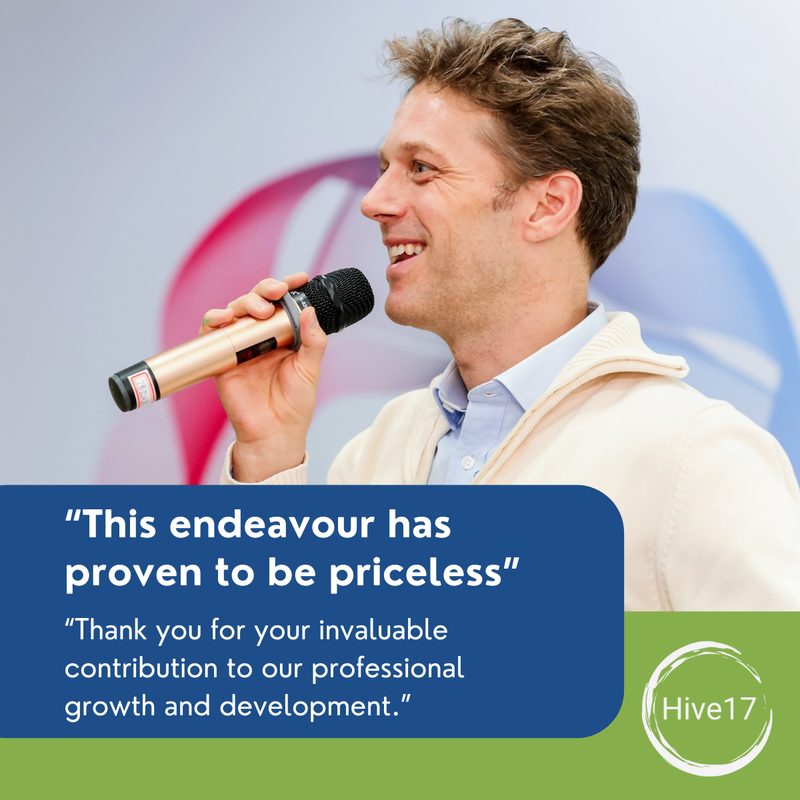
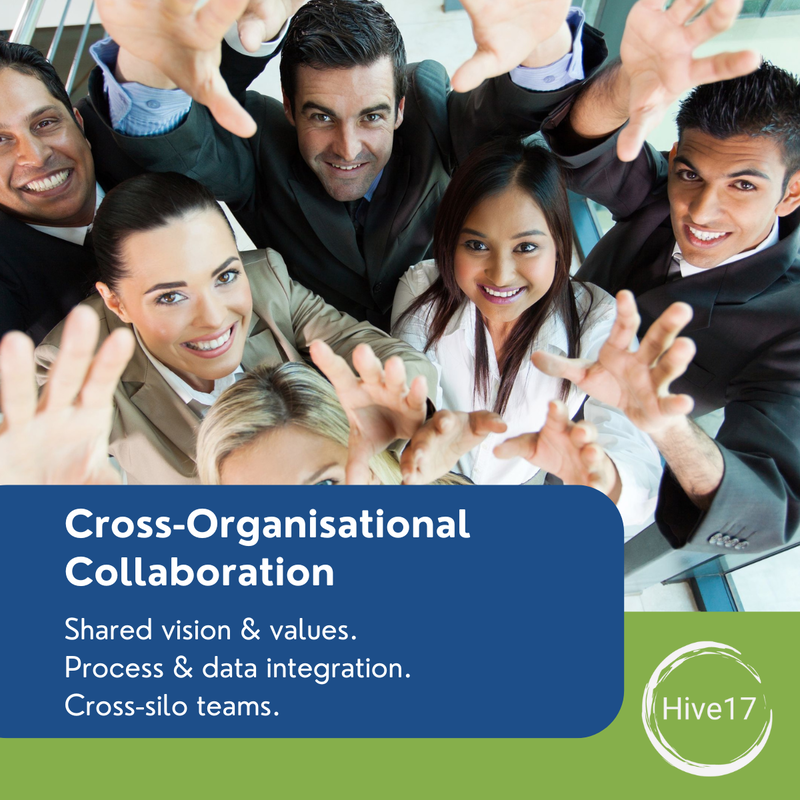

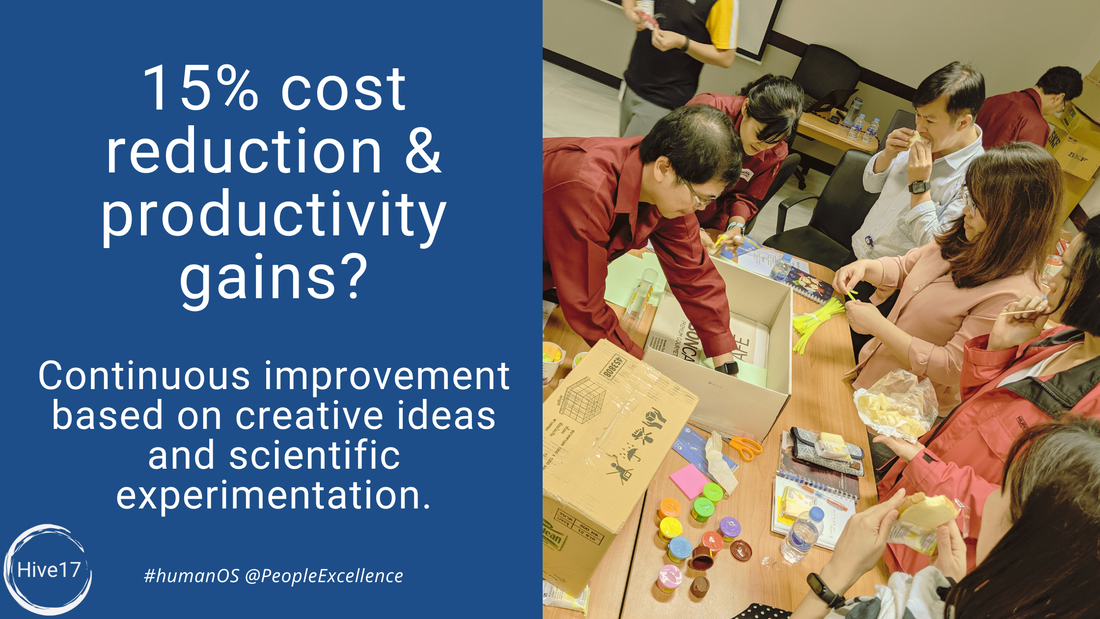
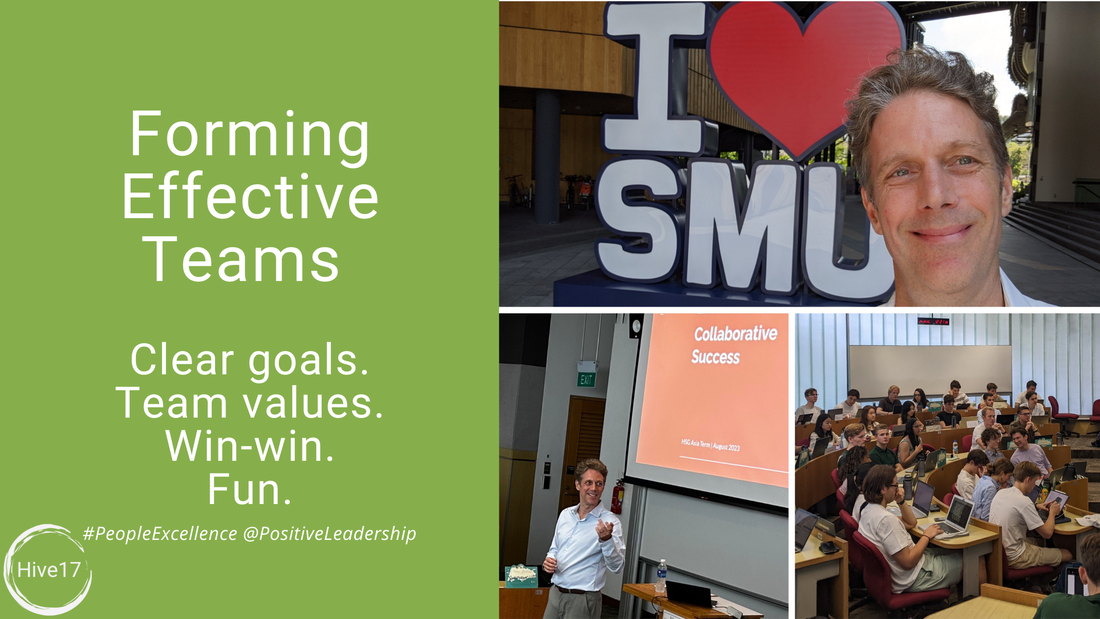
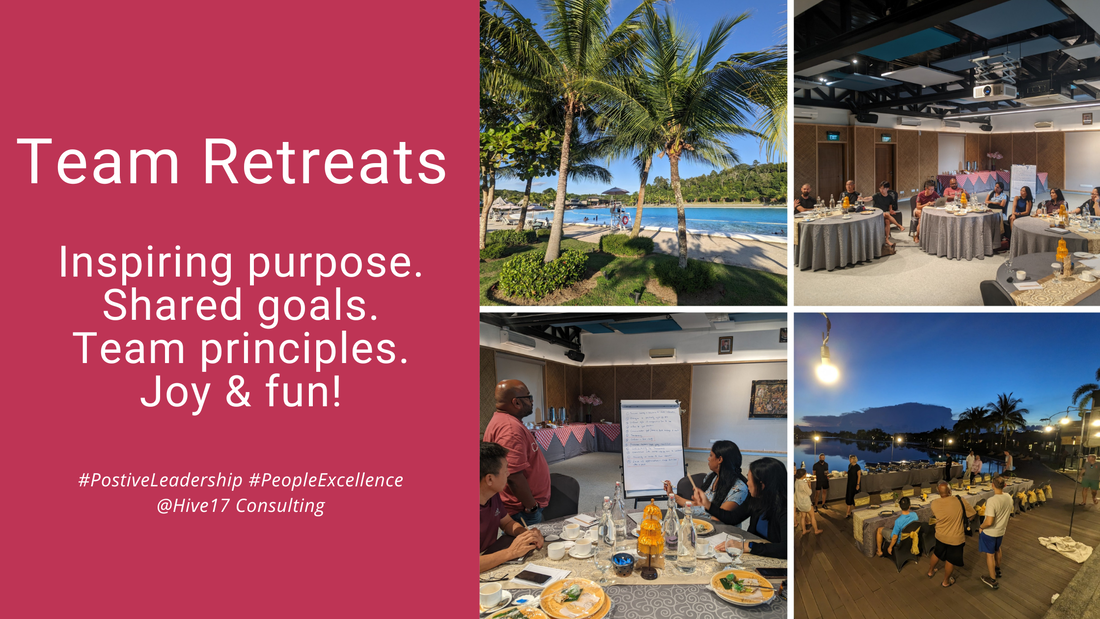
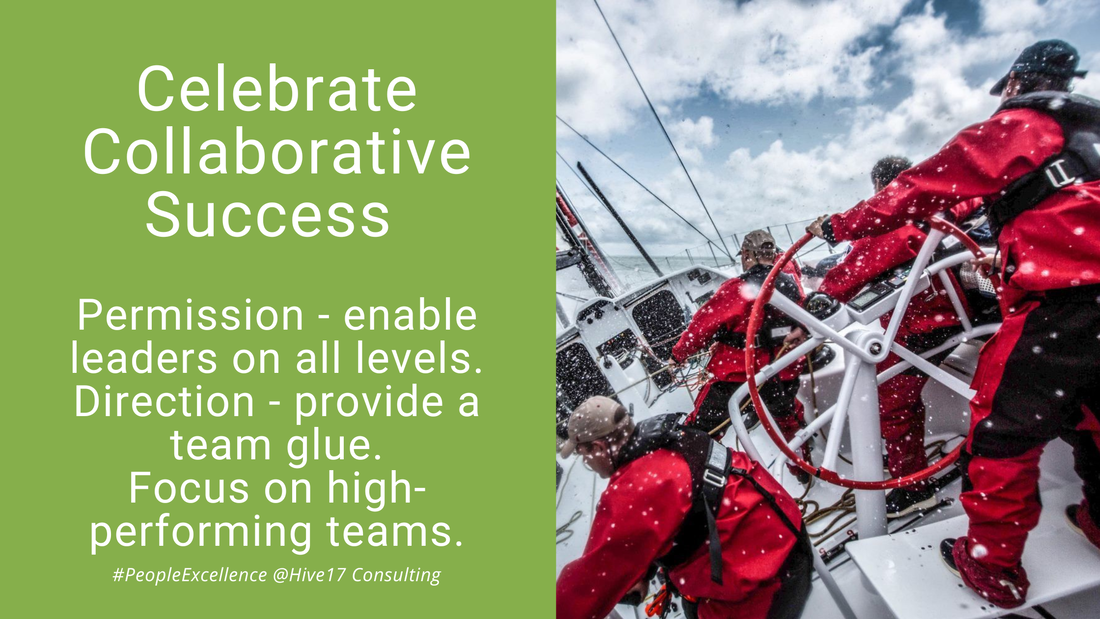
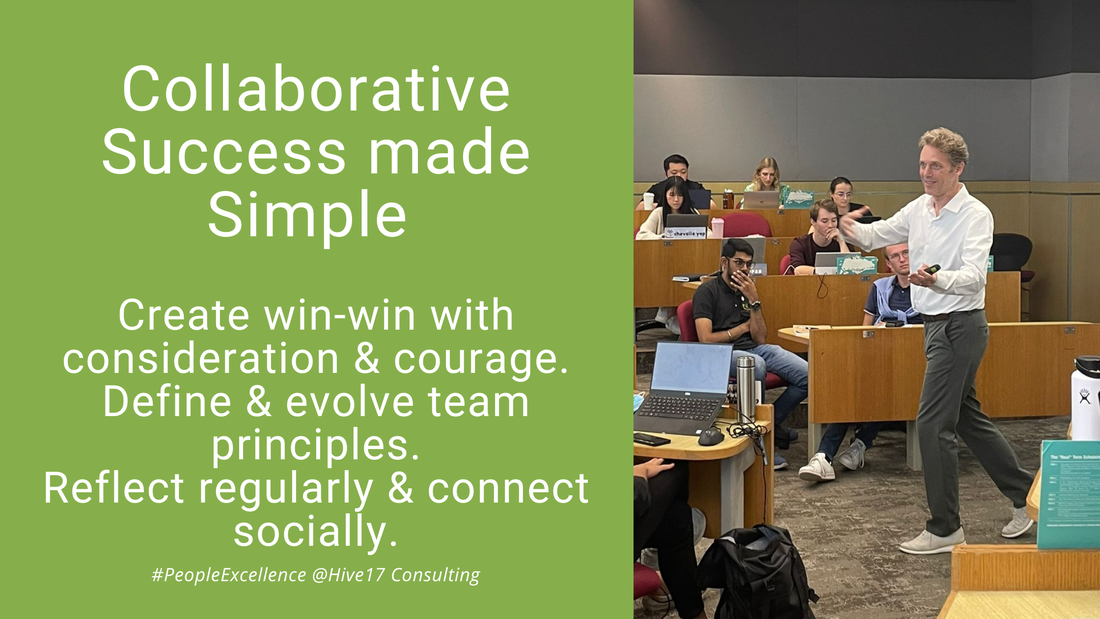
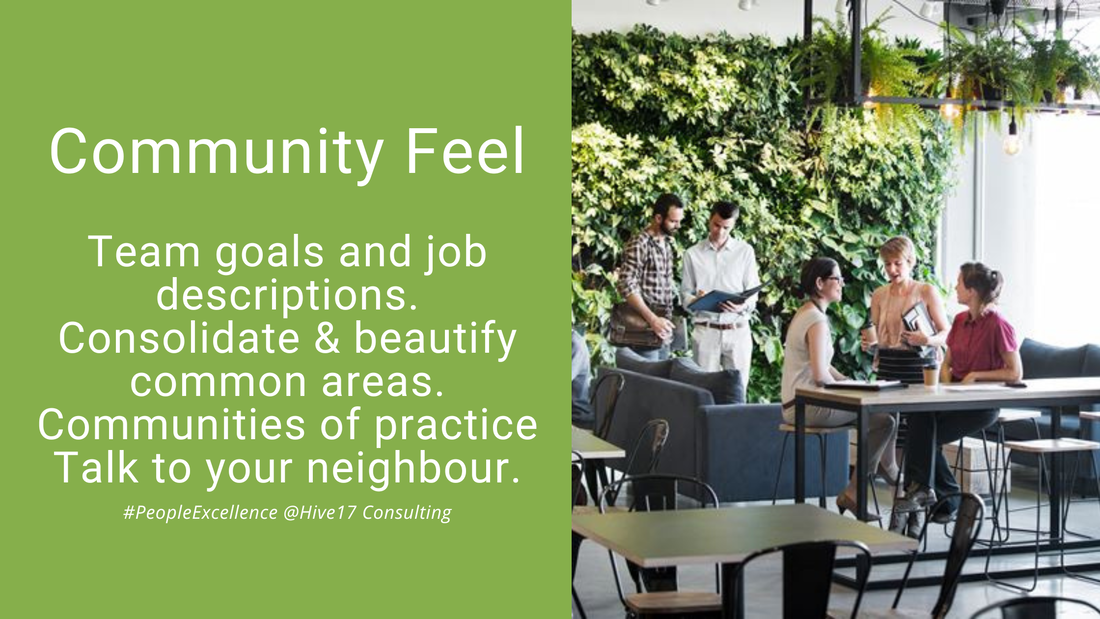

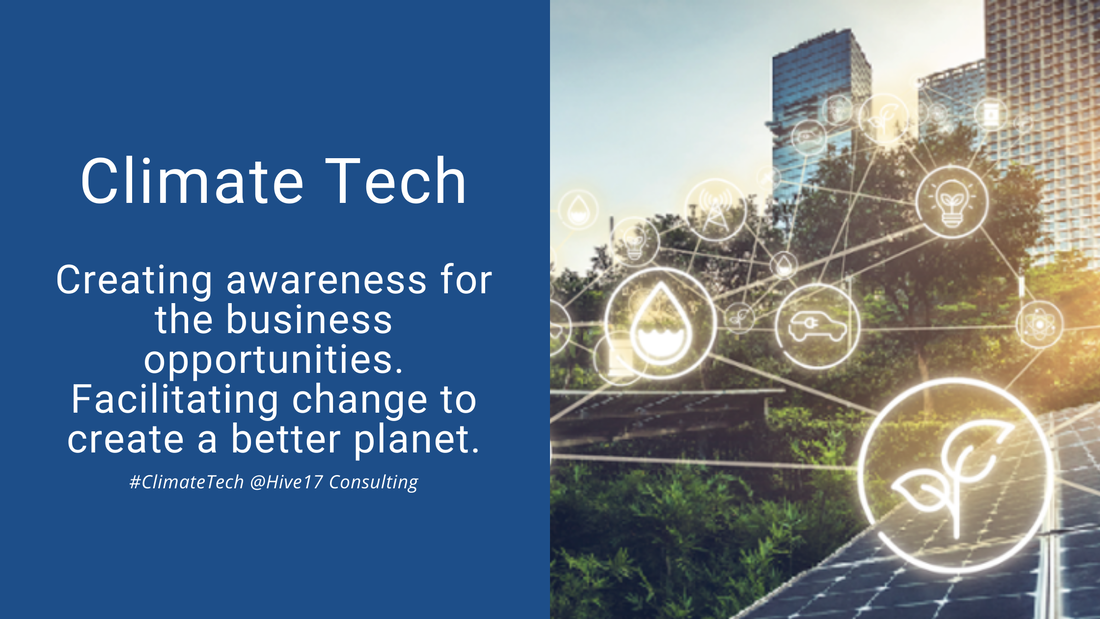
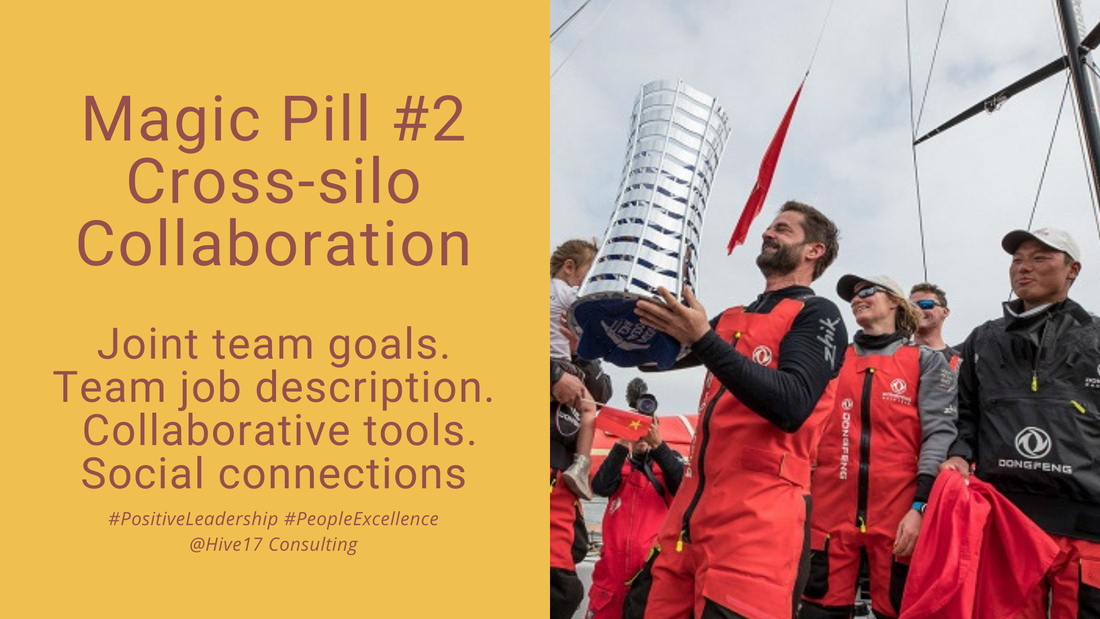
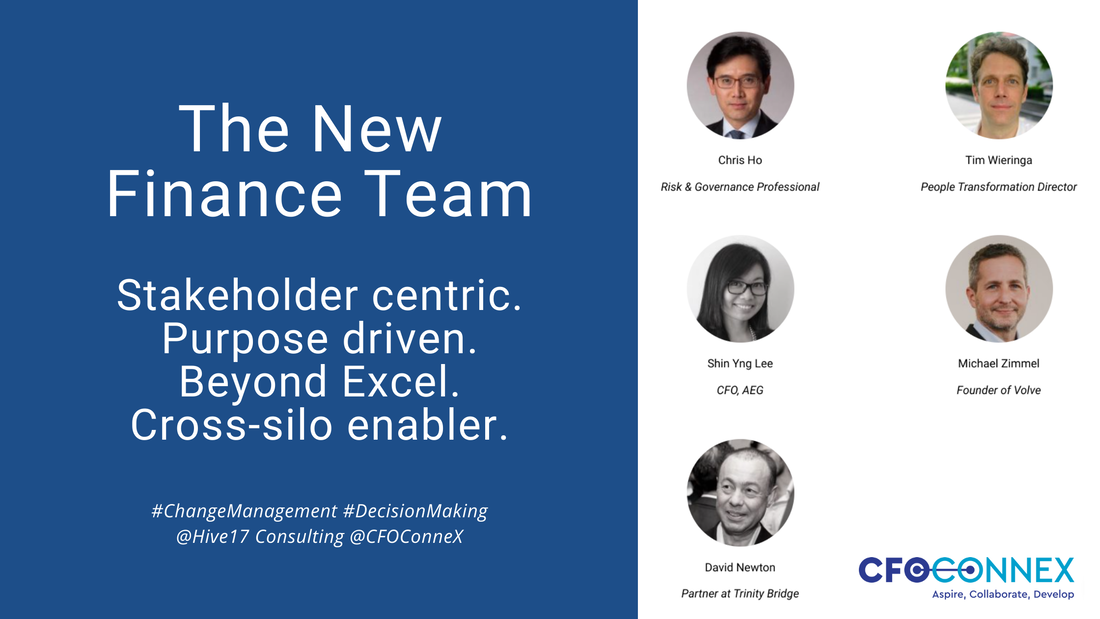
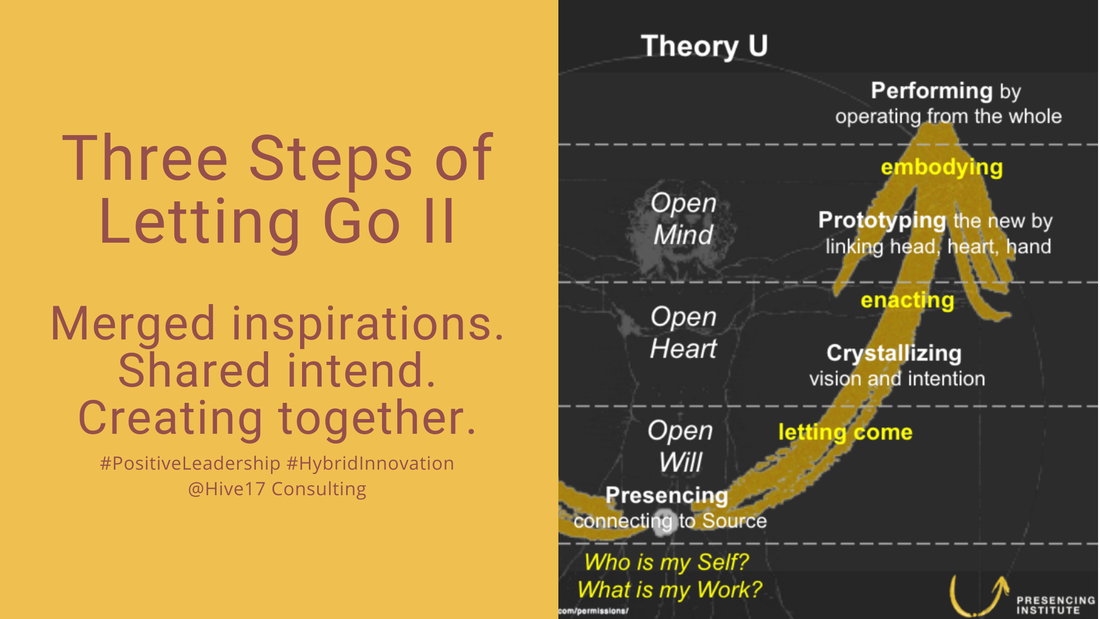


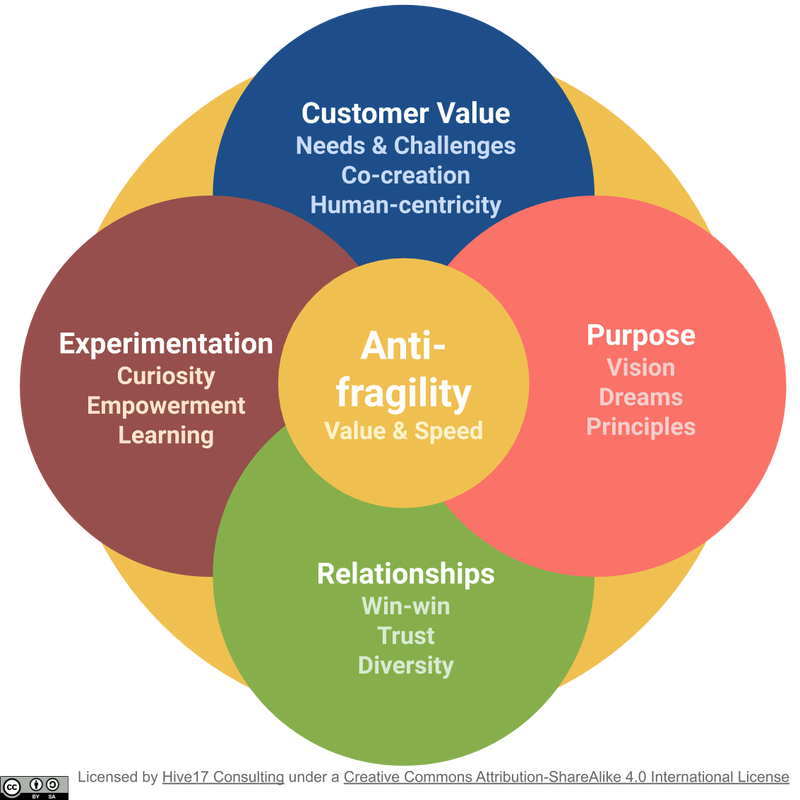
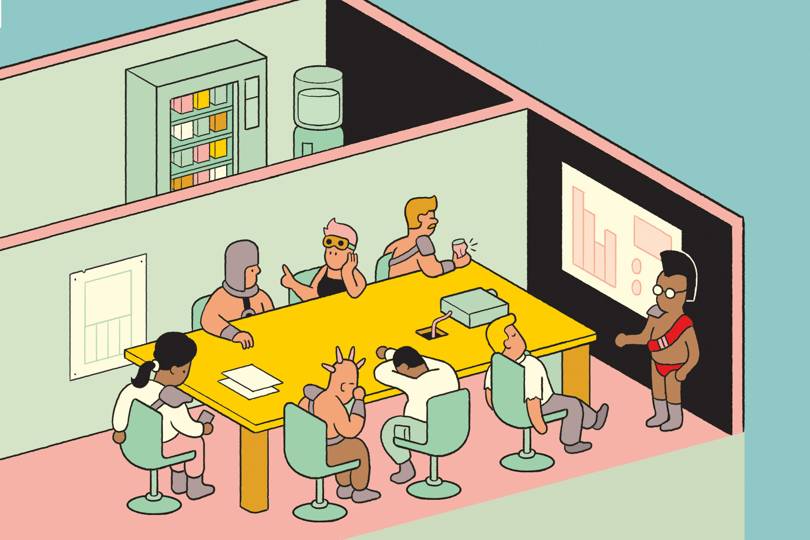
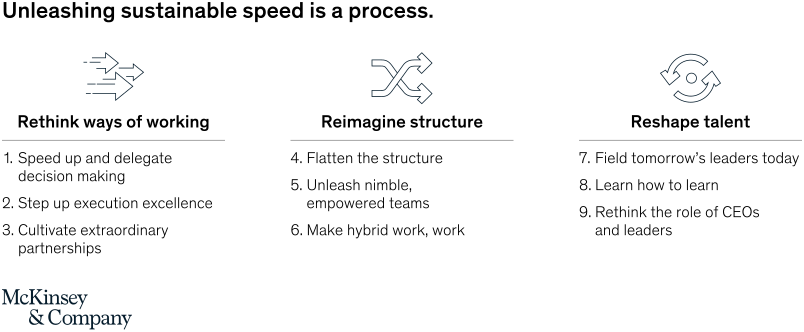

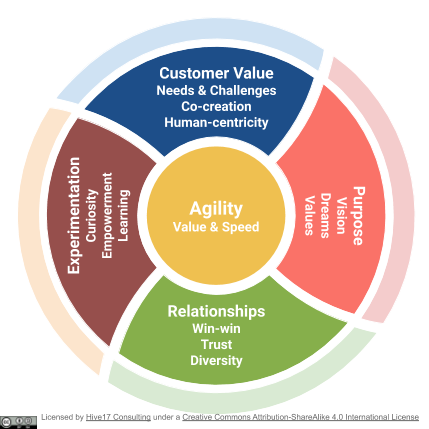
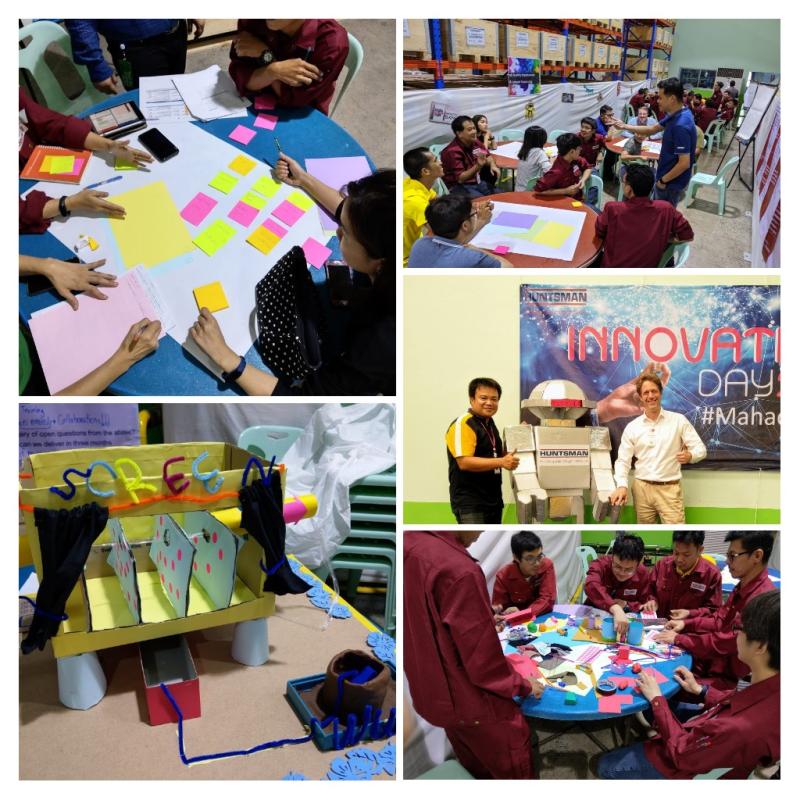

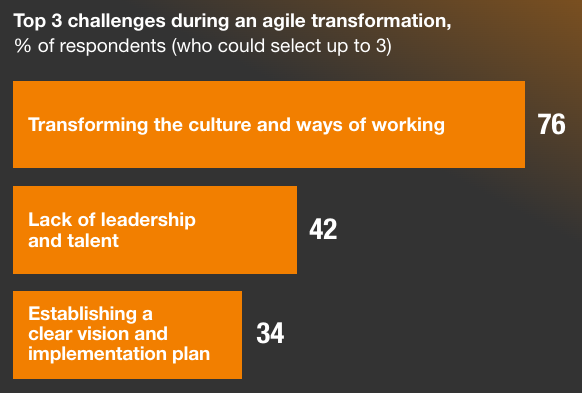
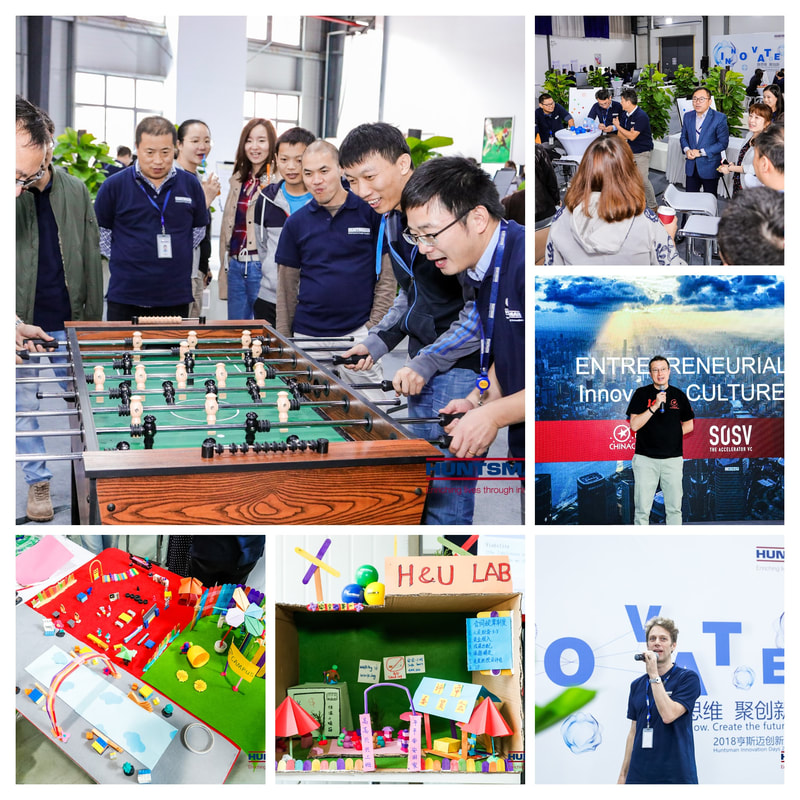
 RSS Feed
RSS Feed